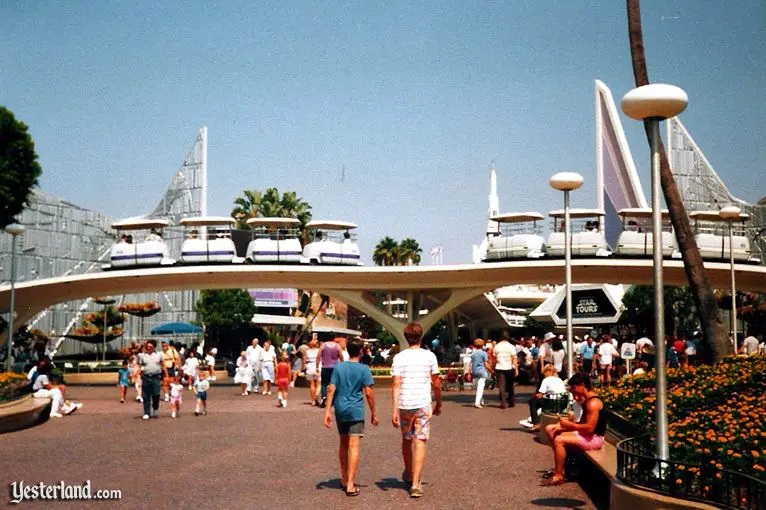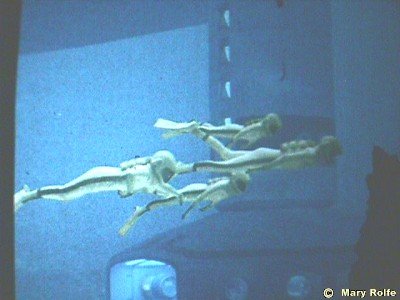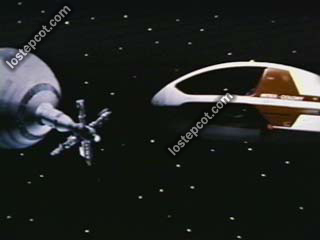
If I had a time machine, one of the first things I would do is travel back to the late 1980s and visit Epcot Center in it's heyday. I briefly talked about my opinion on the current state of Epcot in a previous post, and honestly, today's Epcot doesn't compare to Epcot Center. Originally, Future World was represented by pavilions, and each pavilion represented an idea or main theme and how it could be in the future. Horizons was a special pavilion, the only attraction in Future World to showcase all of Epcot Center's themes: communication, community interaction, energy, transportation, anatomy, physiology, along with man's relationship to the sea, land, air, and space. Horizons was the epitome of what EPCOT Center meant. It took a look at the global community and used the ingenuity of human imagination to imagine what it would look like in the future. Everything from travel and communication, to agriculture and energy was touched upon in some way, shape, or form as the tale of Horizons unfolded throughout the attraction. The message of a brighter tomorrow through the resourcefulness of the moment is something that could definitely reinvigorate Epcot and Walt Disney World as a whole today. Like I said, Horizons was special.

Epcot Center opened October 1, 1982, and Horizons opened one year later on October 1, 1983. It was immediately a hit with almost every single person who rode it, and became one of the most popular rides in Epcot Center. It was called "A Vision of the Future", a ride showing you the life of a family living in the future. The message housed inside of this pavilion was "If you can dream it, then you can do it!" Horizons was sponsored by General Electric. When a company sponsors a ride, this basically means that they provide funding for maintenance and refurbishments of the ride, and the company then gets to have some advertisements within the ride. GE was featured on Horizon's sign (as seen in the beginning of this post), and guests who walked through the sliding doors to the queue would often hear an instrumental arrangement of GE's commercial jingle We Bring Good Things to Life.
The pavilion was loved by Guests for years, up until GE dropped their sponsorship in 1994. Because corporate sponsorship played an important part of keeping attractions open and functioning, Horizons began to operate on a seasonal schedule. Unfortunately, on January 9, 1999, Horizons closed permanently.
The lack of another corporate sponsorship probably played a huge role in this decision, but it was also rumored that the building was collapsing under its own weight. A sink hole emerged under it in 1998, and that may have been the final nail in its coffin. The building was completely dismantled to make way for Mission: SPACE, which opened in 2003. The process of tearing down the grand Horizons building is extremely disturbing for me to look at. To see such a beautiful pavilion torn down to shreds actually makes me feel nauseated.
My first trip to Disney World wasn't until 2003, so I never got to experience Horizons. However, after seeing so many videos of the attraction, and reading about it through other blogs and websites, I've seen that people are really passionate about Horizons. One example of this is the blog Mesa Verde Times (
http://mesaverdetimes.blogspot.com/)
Says the authors:
We're Hoot and Chief. We love Horizons and did our best to document it before it was destroyed. We left our ride vehicles repeatedly and even spent hours crawling around in the guts of the attraction. These are the fruits of our labor for you to enjoy!
The entire blog is full of video and photo footage of the attraction in the months before it closed. These two guys literally got out of their ride vehicles to document everything they could about the attraction. Highly illegal and dangerous, yes, but this goes to show you just how beloved Horizons really was.
Says the website:
HORIZONS was the single greatest theme park attraction ever constructed, but was sadly closed forever in 1999. My mission is to recreate this lost EPCOT Center attraction in virtual 3D space, so that it can once again be experienced and enjoyed by all.
First, I will recreate the entire HORIZONS pavilion as a 3d model (including all lighting, show scenes, and animated moving parts) using a combination of Google Sketchup and 3D Studio MAX.
Then, I will create an interactive version of the pavilion so that it can be experienced in first person (like an FPS video game) through the web. I’m planning on using the UNITY engine to do so, so if you don’t have the unity plugin, go ahead and head over to unity3d.com.
This guy basically is reconstructing a virtual ride-through of the attraction. It's seriously amazing, and that obviously takes A LOT of dedication.
Now, let's talk about Horizons, the ride.
Walking up to this huge gem-shaped building, you'll enter the queue, as seen when this video begins. The queue is long and winding, but is completely atmospheric. Peering into the windows shows you a brief look at the three different cities you can visit; Mesa Verde, Brava Centuri, and Sea Castle. There's a sign here titled Futureport, and shows all the places you can travel from your current location, Horizons. Notice how Mesa Verde, Brava Centuri, and Sea Castle are all on the departure list.
Now, we're boarding the ride.
You first hear your narrators, a husband and wife from the twenty-first century introducing you to your trip into the future. But first, we look back at previous visions of what the future would be like. Jules Verne is seen in his rocket by the moon,
and a vision of the future from the 1930s, complete with retro furniture and robots.
This next section shows clips from various movies that have to do with mankind's vision of what they thought the future would be like. Now, a vision of the future from the 1950s, and it looks a lot like the show The Jetsons.
Now your narrators tell you the advancements being made today (1980s-1990s) and huge Imax screens project different images that surround you and make you feel like you're floating. A lot of the technology they're talking about here is now outdated or updated.
Now, we get to the best parts of the ride.
Your narrators tell you about the advancements being made in outer space, the desert community, and underwater. They take you into their home in a city named Nova Cite the 21st century. It's a huge set, showing a glimpse into their life. The wife is talking to their daughter, who lives in the desert community Mesa Verde, via holographic phone.
Now we're in Mesa Verde watching their daughter at work. She's monitoring farming in the desert community, and talking to her husband and son via hologram.
The son is going to be having a birthday party, and all the relatives are going to be there, traveling from Brava Centuri and Sea Castle to attend the party.
Their daughter is talking to her boyfriend, who lives in Sea Castle. He's going to try and make it to the party too, but he's apparently known for being late.
We get a glimpse into a diving class for kids, and their teacher is going to be taking them diving for the very first time. This suggests that in the future, when people are living underwater, underwater safety will be very important.
More glimpses into Sea Castle are seen, like an underwater restaurant with diners peering out their windows into the ocean.
Here's the diving class swimming by us! Your narrators explain how seaweed and other resources are being used in the ocean.
And now we're visiting our last location, Brava Centuri, outer space.
An astronaut is seen repairing a satellite, a glimpse of the space station is seen, and we're introduced to a family living here. The son has lost his shoe in the anti-gravity chamber of their home, and the dad is trying to grab it.
There's a lot of technology here, such as crystals and science labs.
Our narrators check the time, and see that it's time for their grandson's birthday party in Mesa Verde. The next scene shows all the relatives in all their different homes, and although they're far away, they're all able to attend the birthday party for little Davey.
We're heading back to Horizons Futureport now, and a voice lets you know that you need to choose which way you want to return home. You may travel through Mesa Verde, Sea Castle, or Brava Centuri. You pick your choice inside of your ride vehicle on digital touch-screens, which was extremely high tech back then. Depending on which one you pick, a short video will play showing you traveling back to Horizons Futureport. (The people in this video chose Sea Castle.)
Brava Centuri
Mesa Verde
Sea Castle
Your narrators bid you farewell, and give you an optimistic final message: "If we can dream it, we really can do it."
This mural, titled "The Prologue and the Promise", was located at the exit of the pavilion up until the late 1980s.

When the mural was taken out, a colored lights corridor led guests from their futuristic trip back into Epcot Center.
I believe that the reason this attraction is so beloved, even today, is because it gave such an optimistic look into the future, and focused on the family unit. Sure, there was a bunch of technology thrown in there too, but the true essence of the ride was the fact that it focused on how this family actually is living in the future. And believe it or not, they're living a lot like us. A lot of people are afraid of the future and what it might bring, and I think that Horizons takes that fear and shows you that there really is a brighter tomorrow ahead of us. Even though this ride was built 30 years ago, it's essence is still very relevant today. Our world is scary, and nobody knows what the future will bring. That's why I think that Disney should bring Horizons back in a new, updated way, and give everyone another optimistic glimpse into what future living could be like.






























































